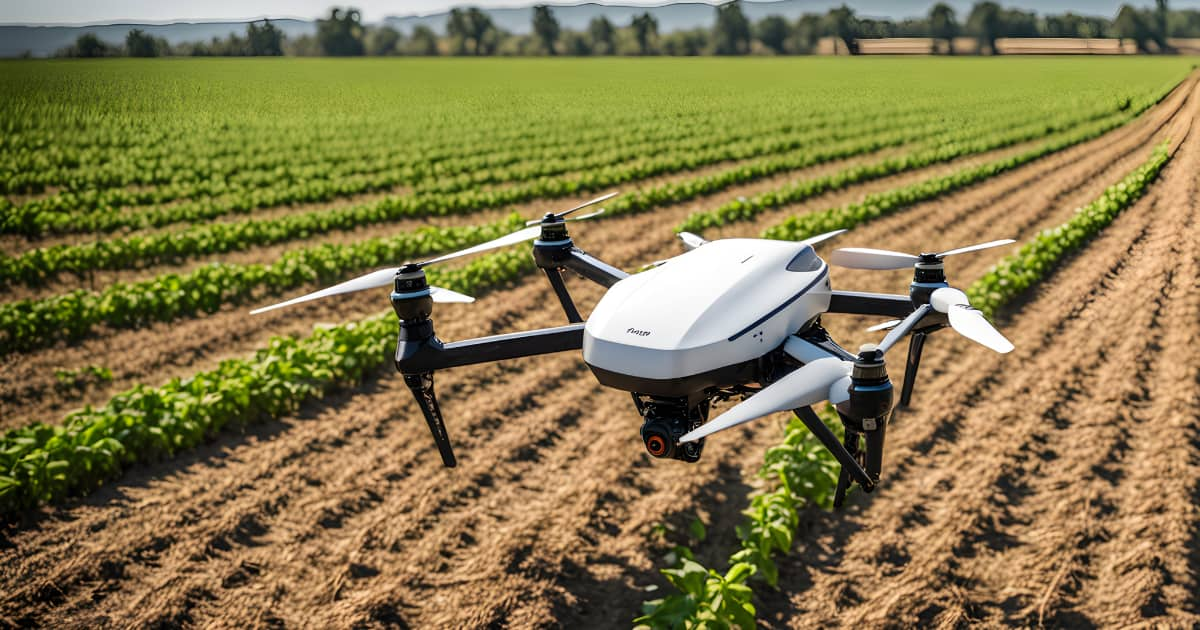Artificial intelligence has a lot to offer in environmental protection or in the fight against global warming. But we must keep in mind that AI also has a carbon footprint.
While the protection of the planet is a necessary goal and conservation efforts are multiplying, we must always keep in mind the duality of the initiatives that have been launched. All actions are polluting, even those aimed at fighting pollution. But the challenge is then to calculate the gain, in terms of pollution reduction or environmental protection, to determine whether the ratio is satisfactory enough in relation to the cost.
Among the most promising options to help preserve the environment are digital solutions, which can have proven benefits in terms of pollution reduction and energy management control. For example, it may be possible to use cameras to replace the intervention of agents to monitor the operation of facilities or to control the management of lights and heaters in a building to optimize their use. Automation is one of the most permissive and beneficial areas in terms of potential gains.
But IT solutions consume energy and produce what is known as digital pollution. According to ADEME, in 2022, the electrical energy consumed by digital devices is responsible for 4% of greenhouse gas emissions and could double by 20251. It is also worth noting that 7 to 10% of the world’s electricity is consumed solely by Internet use.
As artificial intelligence continues to improve and to reinforce automation technologies, a question naturally arises: what is the place of artificial intelligence in relation to the environment? Why is it used and what are its positive and negative impacts on the environment? Finally, can we mitigate the carbon footprint of AI and is the cost-benefit ratio advantageous?
AI applications in the ecology sector
First of all, artificial intelligence has many roles to play in the ecology sector itself. The possible applications of AI can be actively used by scientists to assist them in their work to preserve the environment. The potential offered by AI is colossal: maintenance of wind turbines facilitated by the use of drones with improved inspection capabilities2, prediction of the arrival of heat waves by analyzing weather conditions3, control of urban development and ecosystem evolutions4, are just a few examples.
Here are some non-exhaustive but detailed examples to understand how AI algorithms can be used.
Detection of oil spills and pollutants in soils
The detection of pollutants is important for the ecology sector because the contamination of the environment by chemicals can have disastrous consequences on biodiversity. However, one of the first difficulties scientists face is obviously to be able to detect contaminated areas.
That’s when researchers thought of solutions using AI to help them overcome the obstacle. In the case of oil spills, one of the proposals is to use detection algorithms to locate them using satellite images5. It is also possible to use drones equipped with infrared cameras to detect them even at night, especially in port areas6.
Another type of contaminated area that is difficult to discover concerns soil pollution. AI can be used in particular to detect the presence of contaminating oil in the soil7. For example, it can be thanks to a sensor embarked on a robot moving on a potentially contaminated site that the pollutants can be detected. The sensor will allow the recovery of the reflectance spectra of the elements contained in the soil and the AI will be able to determine if there is a presence of pollutants and what they are. The point of these practices is that AI can help scientists perform analysis and detection much faster.
Monitoring carbon levels in forests
Artificial intelligence can also be used to monitor carbon levels. One study measured the carbon density in African trees according to their climatic region (semi-arid, tropical, etc.)8.
AI was used to individually recognize and count each tree on satellite images. This method saved a lot of time and also improved accuracy. Because it was impossible for humans to count trees one by one over entire regions by hand, approximations had to be made. These approximations also took into account grasses and shrubs, which distorted the results because they contain much less carbon than trees.
Thus, with this new study, it was possible to determine that the carbon storage of trees was lower than previously predicted and that drylands still stored significant amounts of carbon, which changed the climate view of the situation. The use of AI in this study was crucial in providing a better understanding of the impacts of global warming and how the Earth’s carbon cycle works.
Traffic management
The share of greenhouse gas emissions attributed to cars while on the road is estimated to be between 6% and 9%9. Reducing this share is desirable, especially in areas where traffic is heavier and air pollution is higher. In some cases, this may be a concern for air quality and health. Traffic fluidity means reducing the amount of time vehicles spend in traffic and thus ultimately helping to reduce CO2 and fine particle emissions, thus preserving the health of citizens.
This is why several projects have been launched with the aim of using deep learning technologies to respond to the urban planning challenge of traffic fluidity.
For example, Google has experimented with the use of AI to optimize the operation of traffic lights in real time according to the jams. The result was a 10 to 20% reduction in fuel consumption and waiting time at junctions10.
Wintics, a French company specializing in video analysis for the benefit of local authorities, has also launched projects to optimize the management of tourist flows, analyze the occupation of carpooling areas or supervise parking to avoid unnecessary rotation11.
Protection of biodiversity
One of the main pillars of ecology is the protection of biodiversity. Preserving ecosystems, safeguarding animal and plant species, and preventing the drift of human practices are all actions for which AI can assist specialists.
For example, an AI project called Seeker aims to fight against poaching and trafficking of wild animals12. The device has been tested at London’s Heathrow airport, where AI is being used to enhance the capabilities of luggage scanners. The goal is to detect illegal wildlife items, such as ivory, and then track and shut down the poaching network with the help of data analysis.
Ocean conservation is also a topic that attracts a lot of researchers and sees many AI projects emerging13. For example, there is a humpback whale song detection project, with over 180,000 hours of underwater audio recordings analyzed by a machine learning algorithm. The goal is to help scientists identify these songs to better understand the species and protect its movements.
Artificial intelligence is also used by OceanMind to fight against illegal fishing by identifying and tracking vessels using satellite images. Finally, algorithms can be combined with robotic capabilities to develop autonomous robots that can help preserve the seabed. The mapping and knowledge of the seabed is a real challenge because only a very small part of the seabed is currently referenced.
However, some areas that remain unknown could require real attention and preservation actions towards species that could be impacted by pollution and human activities. Video analysis technologies using deep learning to identify and monitor the health of the seabed are a real asset14.
Artificial intelligence can therefore assist the ecologist engineer, the climate researcher, the urban planner or the coast guard in their activities to preserve nature, fight against global warming, reduce the carbon footprint of human activities or protect biodiversity. The proven usefulness of AI and the multiplicity of capabilities it offers are truly significant in helping experts address one of the most important challenges of the century.
AI’s energy consumption also impacts the environment
Despite the weight that AI seems to carry in favor of environmental protection, we must not forget that the energy consumption of algorithms also impacts the environment.
Given the complexity of the field of artificial intelligence and the many variables that can be taken into account in the calculation of carbon emissions, it is very difficult to quantify its impact concretely. What is certain is that many parameters come into play, just for the training process of a neural network: the location of the server used for training, the type of energy network used, the duration of the training process, or even the hardware with which the training is performed.
To give an indication on a number, researchers at the University of Massachusetts sought to estimate the impact of training natural language processing (NLP) algorithms, for example used by chatbots to “converse” with humans15. They concluded, by converting energy consumption into carbon emission rates, that training a large NLP model emits about 300,000 kg of carbon dioxide; equivalent to 125 New York – Beijing flights. And again, the emission is only relative to the training, it does not take into account the cost of designing, validating, deploying, using and post-deployment monitoring of the artificial intelligence. Many other aspects are also not taken into account, such as IT waste management aspects. AI can therefore quickly lead to excessive energy consumption if its life cycle is not sufficiently well controlled and optimized.
An important part of the consumption directly related to AI is obviously the cost of data collection and storage, which are essential components for the development of AI. Indeed, neural networks require huge amounts of data to be able to perform tasks automatically with decent success rates. However, big data, which includes the collection and storage of these masses of data, represents a real ecological challenge. It is known that data centers are very energy intensive, whether in terms of electricity to run the machines or to power batteries of air conditioners that aim to control the temperature rise caused by the constant operation of computer hardware.
According to ADEME, data centers contribute to global warming by generating 25% of the world’s greenhouse gas emissions for the digital sector16. It then becomes essential to seek to reduce CO2 emissions and more generally the pollution generated by the use of machine learning models and data storage.
This need for consideration has been taken into account through various initiatives such as Green AI, which will be detailed in the next section, and “Responsible AI”. The latter advocates the same principles as the “Thrustworthy AI” by including in addition to ecological notions to the notions of ethical, transparent, fair and responsible systems. zResponsible AI is about ensuring that AI technology is developed and deployed in a way that benefits society while minimizing negative impacts on individuals, communities and the environment. Governments, industry and civil society organizations are working on just that, developing frameworks and guidelines to advocate for trusted and responsible AI. Initiatives such as the European Commission’s “Ethics guidelines for trustworthy AI”17 ensure that ethical values are integrated. And initiatives such as the AI ACT, which aim to standardize and regulate in a very concrete way the deployment of AI technologies in accordance with the European Union’s position on the subject18.
The carbon footprint of AI can be reduced
While it has been pointed out that artificial intelligence consumes and pollutes, it can also enable energy optimization to limit pollution. Thanks to its data analysis and decision support capabilities, AI can help optimize the design of power grids, the use of energy resources, and the development of low-emission infrastructures. In order to take full advantage of the benefits of machine learning, one idea is to succeed in reducing energy requirements to further tip the cost-benefit balance in favor of using AI.
It is with this in mind that Green AI has emerged, ensuring that AI is fully integrated into the principles of sustainable development and that the digital transition is associated with the ecological transition19. In order to make AI “green”, several options can be considered, starting with the integration of Green IT principles and ensuring that the infrastructures necessary for the design of AI, such as data centers, are powered by renewable energy and not by fossil fuels. In the multiplicity of possible actions to limit consumption and pollution, some focus specifically on algorithmic elements, to optimize operating costs from the code itself. With for example:
- Principles such as frugality that consider the optimization of algorithmic data processing to allow AIs to be trained with very little data20. The goal of having a frugal AI is to limit the massive need for data and thus to gain enormously in terms of computational costs during the training phases which, as shown previously, are very consuming.
- Another option is to try to embed the algorithms and thus integrate the AI directly into the devices such as sensors, cameras, etc.21 The goal is to have data collection and data processing in the same place, avoiding unnecessary data exchanges. With embedded AI, only the final result is transmitted from the collection device to the information processing terminal, without intermediate steps. Embeddability contributes to energy savings by limiting losses during unnecessary transfers.
However, these two methods are real technological challenges, requiring extensive research work to enable functional algorithms while being frugal or embedded. The development of such AIs implies having to juggle between algorithm performance, robustness and energy optimization. AI validation principles can help in this sense to ensure that the models are satisfactory in terms of their results while being optimized from an energy point of view.
As it stands, some AI typologies do not participate enough in energy sobriety and would require actions to be taken to implement Green AI practices. This is particularly the case for generative AI such as DALL-E, Chat GPT, Mid Journey and others. Indeed, these energy-intensive algorithms consume a lot of energy during their training but also during their use22.
AI and the environment: the direction to take
A duality always exists, between the complacent and the inconvenient; and artificial intelligence is no exception. With many advantages, but also with its share of disadvantages, AI remains a subject to be weighed. But, in fact, the balance has already been made because artificial intelligence is no longer in a distant horizon, it is already at the heart of society. Now, the real issue is to make sure that the balance is tipped in favor of responsible use and to make sure that it stays there. As discussed earlier, projects for standardization and ethical use of AI are underway to help set an enabling framework for the regulation of machine learning algorithms.
Regarding ecological considerations, several initiatives have also emerged. With for example:
- The Climate Change AI Initiative (CCAI), a collaboration between the AI and climate communities. This initiative aims to accelerate progress on climate solutions using the capabilities offered by AI, particularly in the areas of renewable energy, carbon capture, agriculture and climate adaptation23.
- The AI for Earth program, launched by Microsoft. It offers grants and support to organizations wishing to use AI to address environmental challenges in the areas of climate change, biodiversity preservation and water scarcity24. Google has launched a very similar challenge, which also proposes to provide grants and support for the development of solutions on the same themes25.
- The Green AI initiative, led by researchers at the University of Massachusetts at Amherst. As presented earlier, the latter focuses on developing AI algorithms that are more energy efficient and have a smaller carbon footprint26.
Thus, many projects aim to ensure positive impact and sustainable development of AI. Environmental issues have been seriously considered. Given the tangible benefits of using AI, it is really important to ensure that sustainable frameworks are developed that allow for a well thought-out use of these technologies.
Sources
- Rapport sur la pollution numérique ↩︎
- Inspection des éoliennes par des drones et des technologies d’IA ↩︎
- Solutions IA pour anticiper les canicules ↩︎
- Une IA de google pour lutter contre le réchauffement climatique grâce à l’analyse d’images satellites ↩︎
- Étude sur la faisabilité de détection de marées noires à l’aide d’algorithmes d’IA ↩︎
- Étude sur la détection de marées noire dans des ports à l’aide de drones et d’algorithmes d’IA ↩︎
- Étude sur la détection de sol contaminé par le pétrole à l’aide d’IA ↩︎
- Une IA pour mesurer des taux de carbone dans les forêts africaines ↩︎
- Part de la pollution automobile dans les émissions de gaz à effet de serre ↩︎
- Réduction de la pollution automobile grâce à des flux de circulation optimisés par une IA ↩︎
- Wintics, une IA pour réduire l’empreinte carbone des transports ↩︎
- Des IA pour lutter contre le trafic d’animaux sauvages et le braconnage ↩︎
- L’IA pour la conservation de la biodiversité marine et la lutte contre le changement climatique ↩︎
- L’IA et la robotique pour la préservation de la nature aquatique ↩︎
- Estimation de l’impact carbone de l’IA ↩︎
- Consommation énergétique des data centers ↩︎
- Ethics guidelines for trustworthy AI ↩︎
- The EU AI Act ↩︎
- Les principes d’adoption d’une démarche Green AI ↩︎
- Frugalité de l’IA, principe et intérêt ↩︎
- L’embarquabilité de l’IA, une solution pour réduire l’empreinte écologique ↩︎
- L’énorme coût énergétique des IA génératives ↩︎
- Climate Change AI ↩︎
- Microsoft AI for Earth ↩︎
- Challenge Google de proposition de solutions pour lutter contre le changement climatique ↩︎
- Explications concernant le Green AI ↩︎







